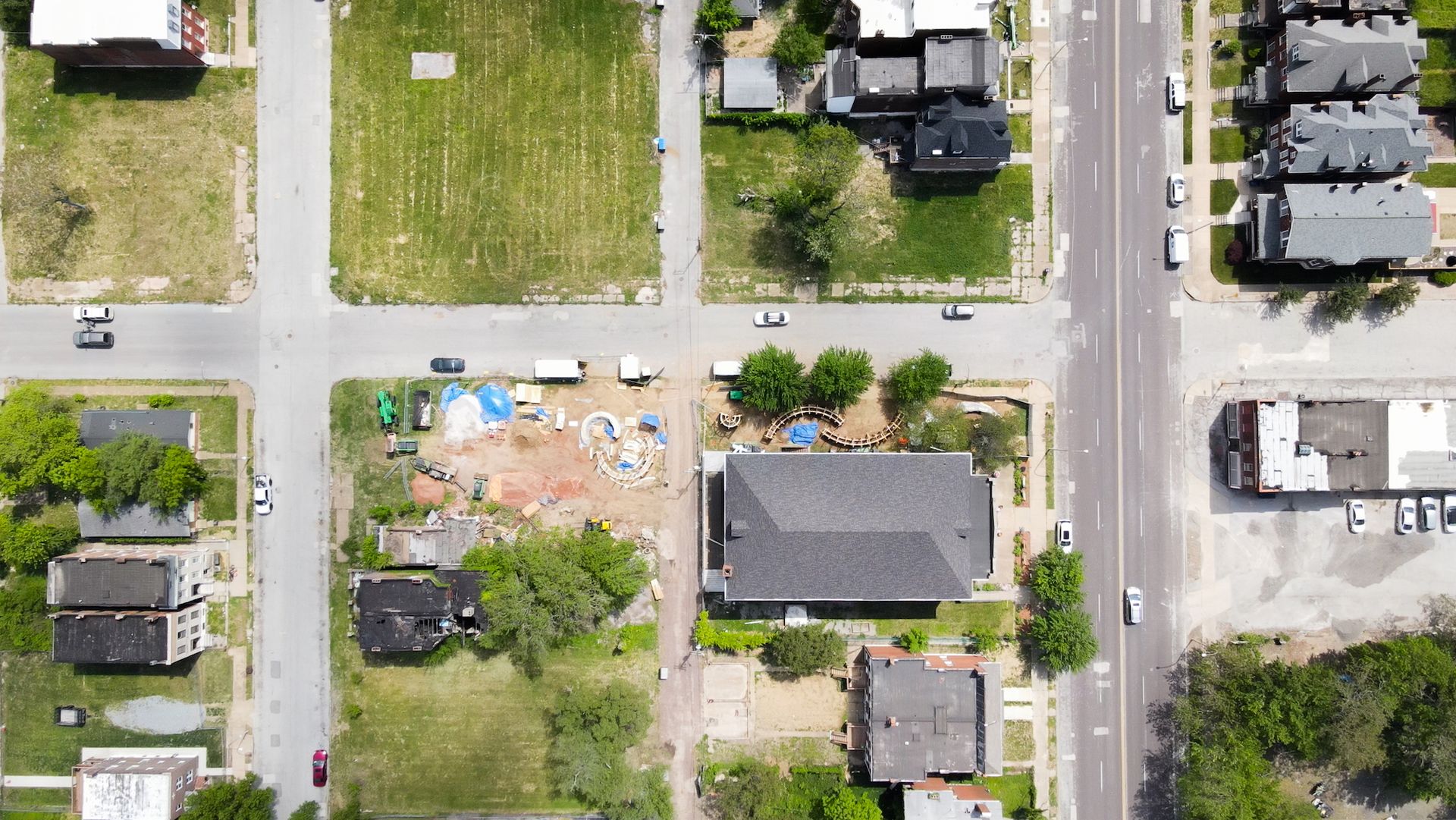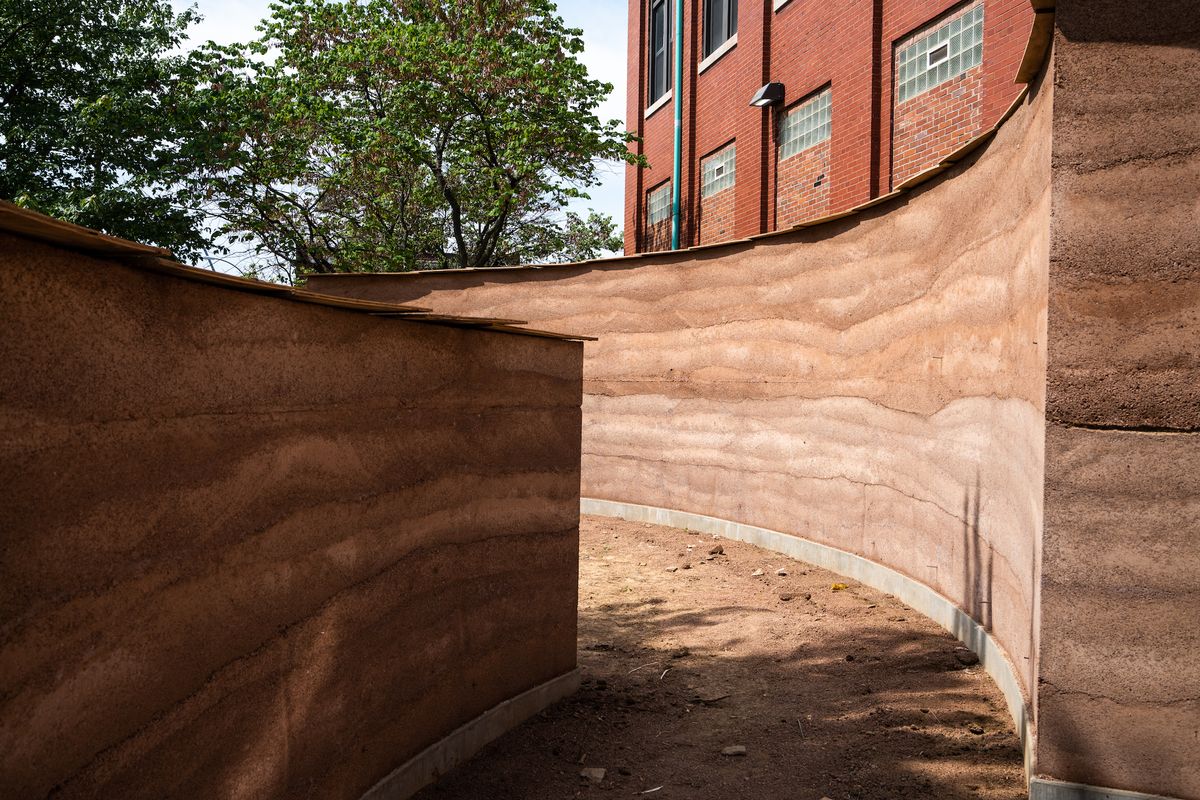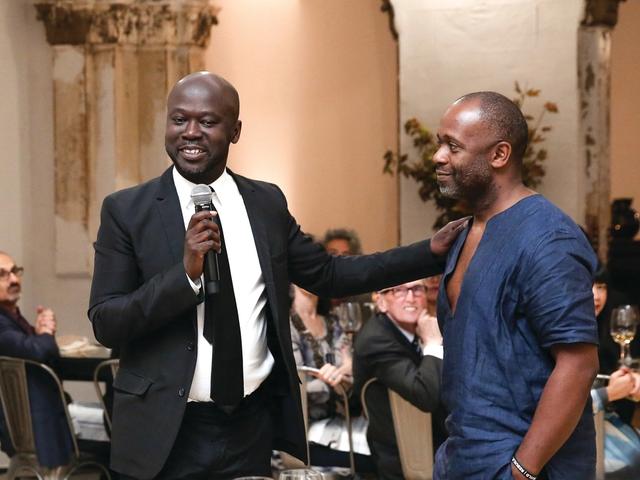The Ghanaian British architect and artist David Adjaye has created Asaase III (2023), his first-ever permanent public sculpture, outside the Griot Museum of Black History in St Louis, Missouri. Commissioned as part of Counterpublic, the city’s triennial civic exhibition, the sculpture is an invitation to engage with the museum that collects, preserves and shares Black history and culture. A dedication event and public celebration will take place on 15 July to coincide with the closing of Counterpublic.
Adjaye described Asaase III as a “Trojan Horse” for the museum and community. “The sculpture acts as a device to pull you in and encourage you to walk its geometry, to look deeply and differently, and above all, to feel these layers of typically unseen, excavated earth that’s being presented to you,” Adjaye tells The Art Newspaper. “In this way, you’re first experiencing the storytelling power of earth, while unconsciously or more discreetly being called to unearth who you are and your relationship to this community and this museum.”

Construction of David Adjaye's first permanent public artwork, Asaase III (2023), at the Griot Museum of Black History, St Louis, Missouri. Commissioned by Counterpublic 2023. Photo credit: Papa Blankson.
Curated by Allison Glenn and donated to the museum by Counterpublic co-founder Lee Broughton and his wife, Chrissy Taylor, the sculpture is the third in Adjaye’s Asaase series that takes the shape of a maze of curved earthen walls. Marking a significant moment in the highly sought-after architect’s career—whose current slate of projects includes the new Princeton University Art Museum and the forthcoming Kiran Nadar Museum of Art in Delhi—Asaase III is his first permanent public art piece. Adjaye’s fame has already generated renewed interest in the area and “the return of an energy surrounding the Griot that has not existed for years”, says Lois Conley, founder, president and chief executive of the museum.
“Asaase III is the kind of project that a small, historically under-resourced cultural institution prays for,” Conley adds. “It is not simply an art installation. Asaase III affirms the significant impact that art can have on a community. It restores the essence of what ‘community’ used to signify. It provides a cultural foundation where folks can find historical inspiration and cultural connectedness. It is a significant anchor that will spark additional investment in an urban community that has for much too long been absent of such investment.”

Construction of David Adjaye's first permanent public artwork, Asaase III (2023), at the Griot Museum of Black History, St Louis, Missouri. Commissioned by Counterpublic 2023. Photo credit: Papa Blankson.
In line with the mission of Counterpublic, Asaase III aims to create new futures for St Louis. Supported by the Mellon Foundation, the commission includes a two-year, full-time fellowship for a conservator of colour to learn from the St Louis Art Museum’s conservation team how to maintain, conserve and provide context for the sculpture.
“Working with the Griot has deepened my connection to the city,” said conservation fellow Ousmane Gaye. “From collaborating with peer institutions to being in community with local organisers, I have a renewed appreciation for the vibrant histories found throughout this city, especially in North St Louis. Arts and culture have a powerful way of making people feel understood and represented.”
Gaye is also learning how human interactions impact existing public art in St Louis so he can better look after Adjaye’s sculpture. Asaase III, named after the word for earth in the Twi language, uses rammed earth with materials sourced locally and from the site of the sculpture itself, including the high-quality red clay that makes up the vibrant bricks for which the city is known. The use of local materials reflects on the history of displacement in St Louis, in particular in the area of St Louis Place around the Griot.

Construction of David Adjaye's first permanent public artwork, Asaase III (2023), at the Griot Museum of Black History, St Louis, Missouri. Commissioned by Counterpublic 2023. Photo credit: Papa Blankson.
“From the mid-19th century plotting of the neighbourhood by James O'Fallon, who was the largest land and slave owner in Missouri at the time, to the mansions that formerly lined St Louis Avenue, which earned the street the name of Millionaire's Row, the Minoru Yamasaki-designed Pruitt-Igoe housing development, and the future site of the National Geospatial Intelligence Agency's main campus, St Louis Place, and neighbouring communities, have dealt with a lot of architectural visioning,” says Glenn.
Rammed earth also connects the Griot to the earth-based architecture of West Africa and the land where many of the people whose stories are told in the museum came from.
“I hope the takeaway is an appreciation for this extraordinary and bountiful material that composes our environment and sustains us,” says Adjaye. “I believe it embodies at once where we come from, as legible documentation of billions of years of evolution, and where we can go, as far as rammed earth as a building material for the future we want to inhabit.”
- An unveiling and block party to mark the completion of David Adjaye’s Asaase III will take place at the Griot Museum of Black History, St Louis, Missouri, on 15 July at 11am




